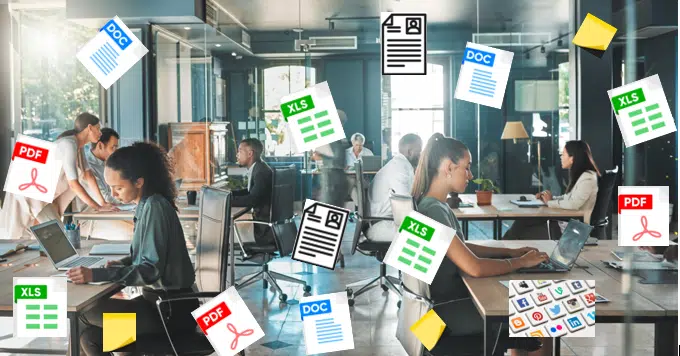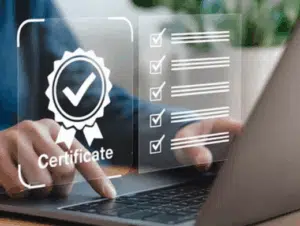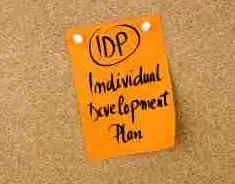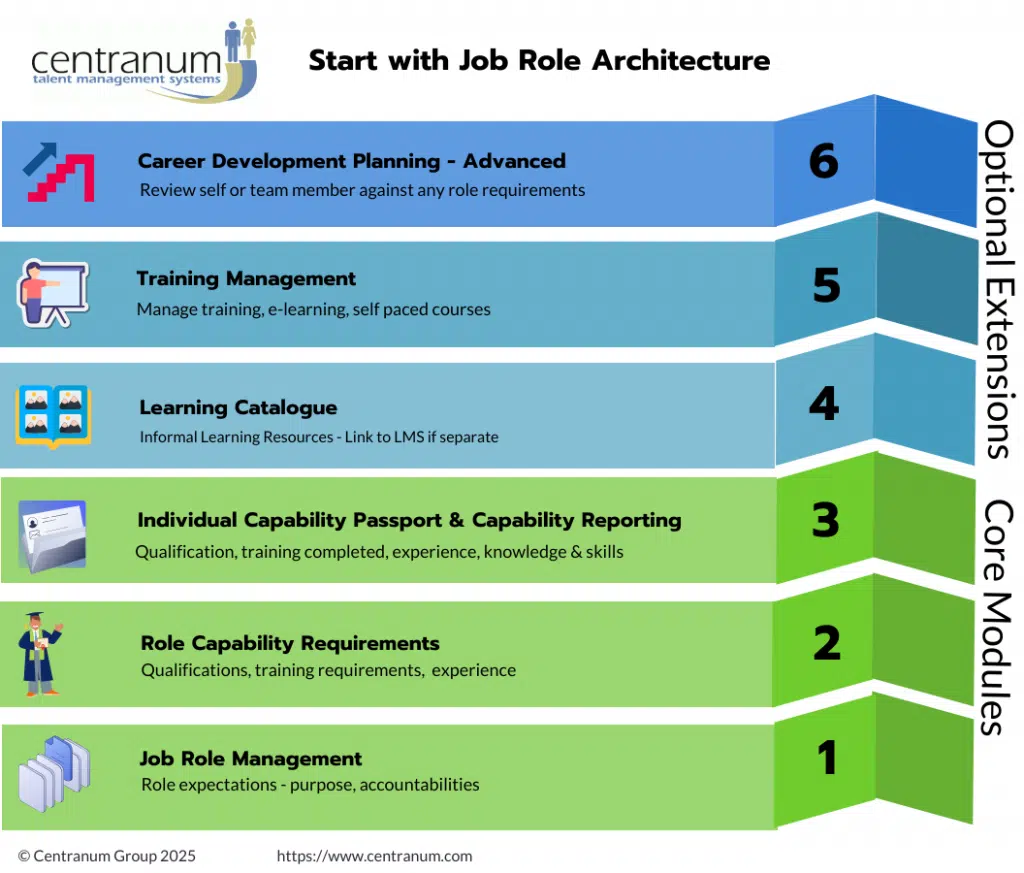
Job Role & Capability Architecture Software
A clear job role and capability architecture is the foundation for effective talent management. It’s part of a comprehensive workforce capability and competency management framework that connects roles, skills, and organisational strategy.
It defines how roles are structured, the capabilities required at each level, and the pathways employees can take as they grow. Without this structure, performance management, career planning, and succession systems lack consistency and impact.
Centranum’s Role & Capability Architecture software provides the foundation you need to align workforce capability with business strategy. It provides the structured capability framework organizations need to manage role clarity, career pathways, and workforce planning. It ensures clarity for employees and managers while supporting long-term organizational growth.
Trusted across industries
For over 20 years, Centranum has supported organizations in healthcare, technology, manufacturing, engineering, and government.
Flexible for Every Stage of Maturity
Whether you need to define jobs, track training, or build structured development pathways, Centranum grows with you — with the option to expand into full competency management when you’re ready.
Solving the Workforce Capability Challenge
Many organizations struggle with fragmented job and capability data. Centranum provides a single platform to capture, align, and manage workforce information consistently across the enterprise.
Are your job roles scattered across documents, spreadsheets, and HR systems?
Without a central source of truth for role expectations and capability requirements, organizations face misaligned training, and unclear accountability. Skills matrices become inconsistent and career pathways stall.”

How It Works (4 Steps)
1. Define Roles & Responsibilities
With optional linked job families and career paths


2. Map Capability Requirements
Include training, certifications, experience, and qualifications
3. Track Training and other Capabilities
Using linked training records, LMS, Capability Passport updates


4. Guide Development
Add Capability Linked development plans to close gaps with clear training & learning activities
Platform Modules Included
Core Modules (Always Included):
Core modules create a scalable capability framework that aligns role definitions, requirements, and career development tools
- Job Role Manager
- Capability Requirement Mapping
- Capability Passport (CV functionality)
Optional Add-ons:
- Learning Catalogue (linked to your LMS)
- Training Management (if you don’t have an LMS)
- Development Plans
- Career Development (advanced pathway matching)

Who it helps
Staff

- Clear expectations
- Career path visibility
- Access relevant learning resources & training
- Personal development planning & tracking
Managers

- Clear role accountabilities
- Visibility of Capability and Skills Gaps
- Training oversight
- Tracking career interest
- Individual & Team development planning and tracking
Admins/L&D

- Single source of truth for role definitions and capability requirements
- Tracking of training completions
- Skills Gap analysis for Learning Needs
- Tools for managing development programmes
- Oversight of career interest & personal development progress
Over 20 Years of Experience in Centralising and Optimizing Job Role Clarity and Capability Alignment. SOC 2 certified

FAQs
What is a job role and capability architecture?
A job role and capability architecture is a structured way to define work across your organization. It outlines what each role is accountable for, the capabilities required to perform that work, and how roles relate to each other across functions or career levels. It provides the foundation for skills development, performance, and succession planning.
Do we need to define every role in detail before we start?
No. A good platform lets you start with core or common roles and expand incrementally. You can import existing job data or create tailored role profiles aligned with responsibilities, capabilities, and pathways — without needing to redesign your org chart.
Can we manage job families in the system?
Yes. Our platform supports job family tagging and filtering in reports. You can also link job families to roles and capabilities to enhance planning, analytics, and development frameworks. This helps you visualize pathways, track capability across functions, and identify bench strength by job type.
How are capabilities different from competencies?
Capabilities refer to qualifications, training, and experience that suggest someone could perform a task. Competencies are demonstrated behaviors and skills observed in action. A good platform manages both — and links them directly to each role to ensure relevance.
How does this help with workforce planning?
With a clear job and capability structure, you can see where critical skills exist, where gaps are emerging, and what development is needed — by team, function, or region. It also supports onboarding, succession, and internal mobility, all from a single source of truth.
Can we align roles with organizational values or strategy?
Absolutely. You can include strategic priorities, values, and behaviors in your role definitions or competency models — ensuring everyone is aligned with the direction of the organization, not just their task list.
What industries use this approach?
This approach is used across healthcare, manufacturing, engineering, public sector, and technology organizations — anywhere there’s a need to manage capability, compliance, and career development at scale.
How does job role architecture support skills matrices?
Role architecture provides the structured capability framework behind skills matrices, ensuring consistency across teams and supporting workforce planning and audits.

